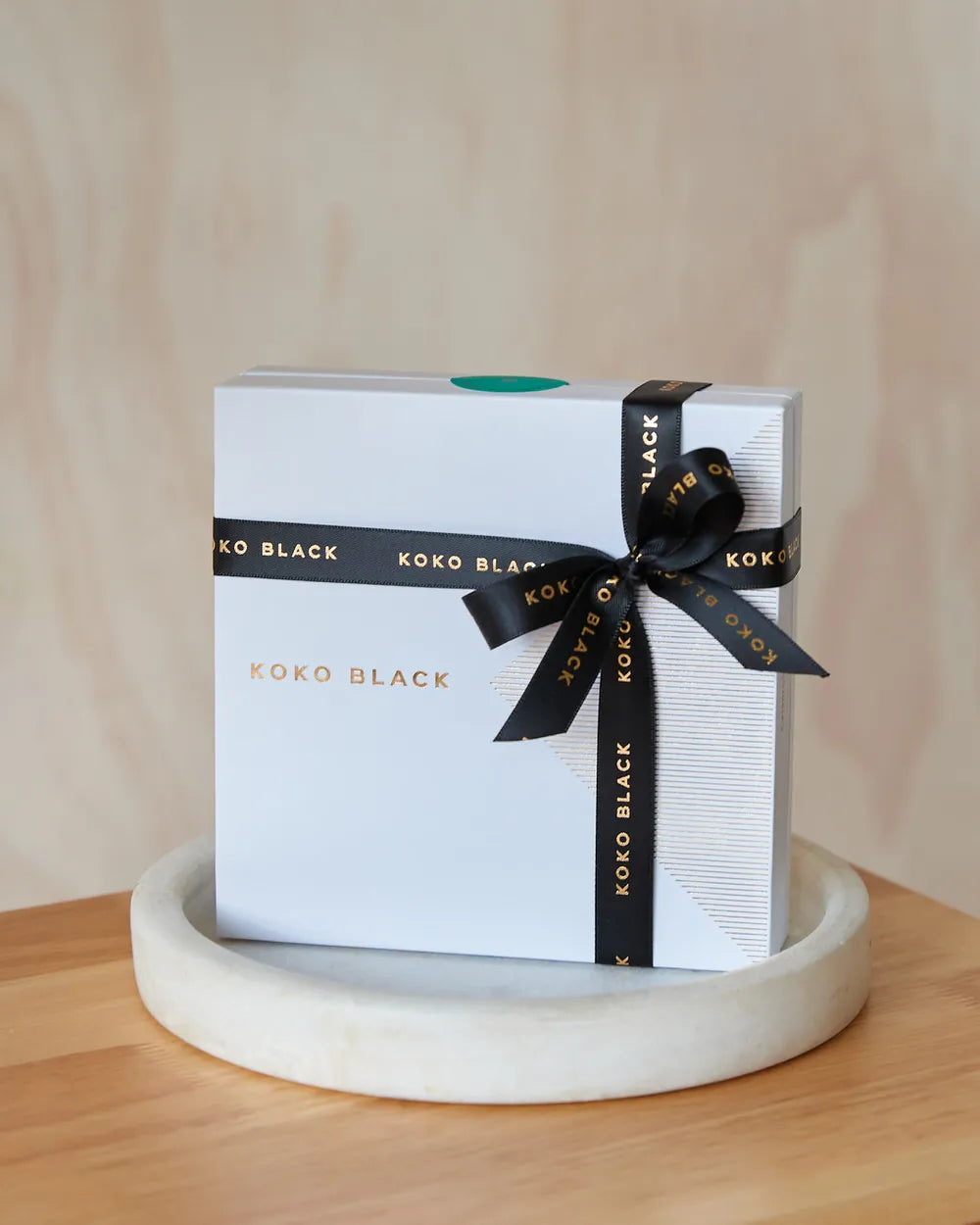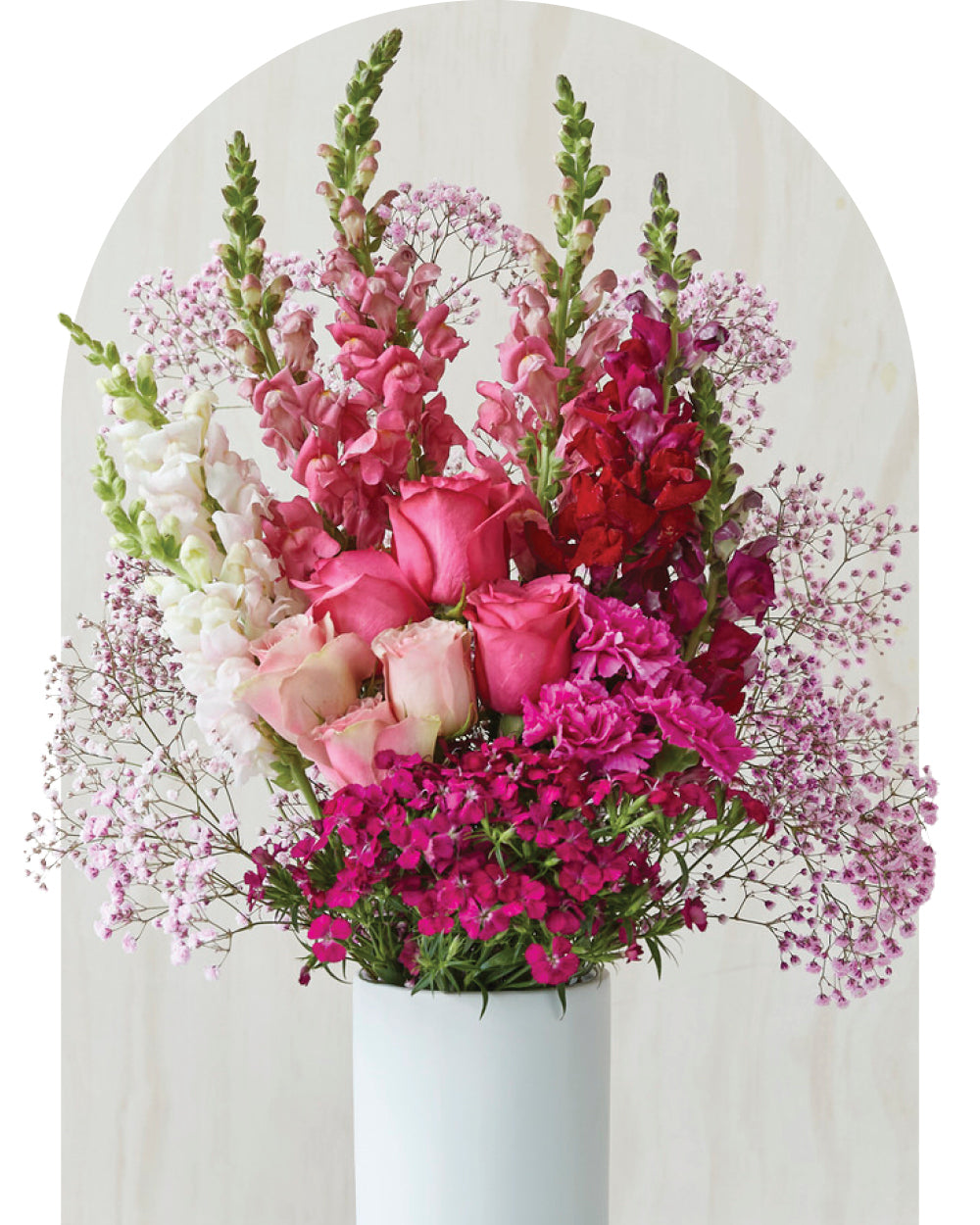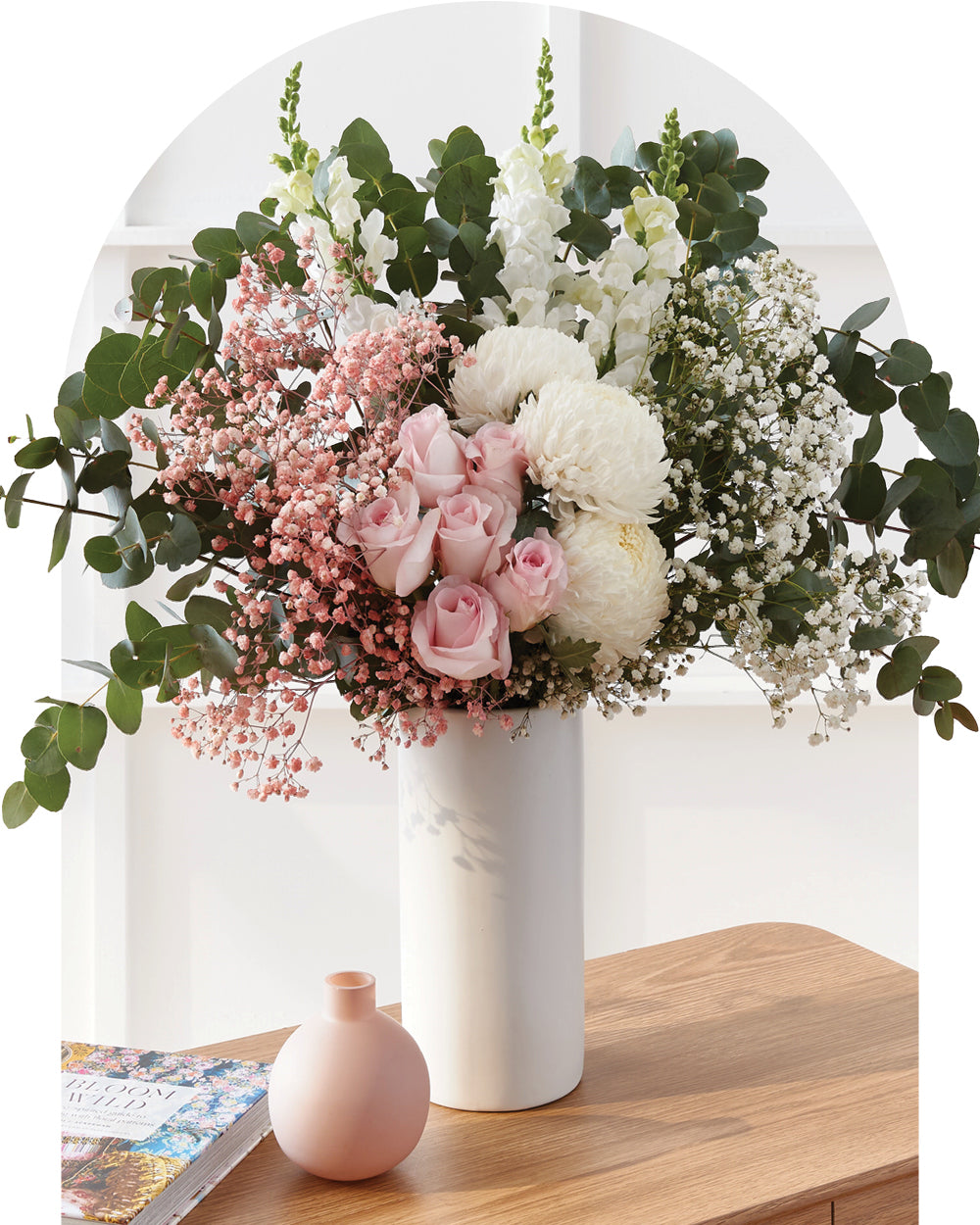If you've been flicking through the pages of interior design magazines recently, you will have noticed the abundance of lush greenery going on within the most stylish houses. That's because indoor plants are hot right now, and we're very excited about it!
Why are indoor plants so popular, you may ask? Well, the reasons are many. For a start, being surrounded by plants is great for your wellbeing. Indoor plants have been scientifically found to improve air quality, reduce stress and improve mental health.
Not only do indoor plants make you feel great, they also look great! Bringing nature into your home adds a vibrancy and freshness that will enliven your current style and be the envy of your friends.
We know you're on board, but now, how to decide which plants will be right for your home? And how to look after them, you ask?
We're here to answer all your questions - read on!
Chinese Money Plant (Pilea peperomioides)
The Chinese Money Plant is also known as a Pancake Plant or a UFO Plant, due to its large, circular leaves that seem to hover in mid air.
It's native to southern China but has been very popular in Scandinavia since a Norwegian missionary by the name of Agnar Espegren took cuttings back home with him. So if you're going for a minimalist Scandi look in your home, you're definitely going to need one or two of these beauties!
To care for your Chinese Money Plant, keep it out of direct sunlight, but in a bright room. The soil needs to almost dry out between waterings, so around once a week should be enough.

Rubber Fig (Ficus Elastica)
Investing in a Rubber Fig is an easy way to give your home a classy look. This stately plant, with its large, dark green leaves, can be kept as a medium-sized plant or grown to become a beautiful indoor tree.
To keep your plant smaller, keep it in a smaller pot to restrict its growth. If you want to see what heights it can reach, put it outside regularly in summer.
The watering needs of a Rubber Plant varies depending on the season. During summer - the growing season - the plant should be kept moist. Water often and wipe the leaves with a damp cloth or mist them.
During winter - the dormant season - you may only need to water your plant once or twice a month. However, if you keep your house well-heated in winter you may need to mist the leaves and water more often.
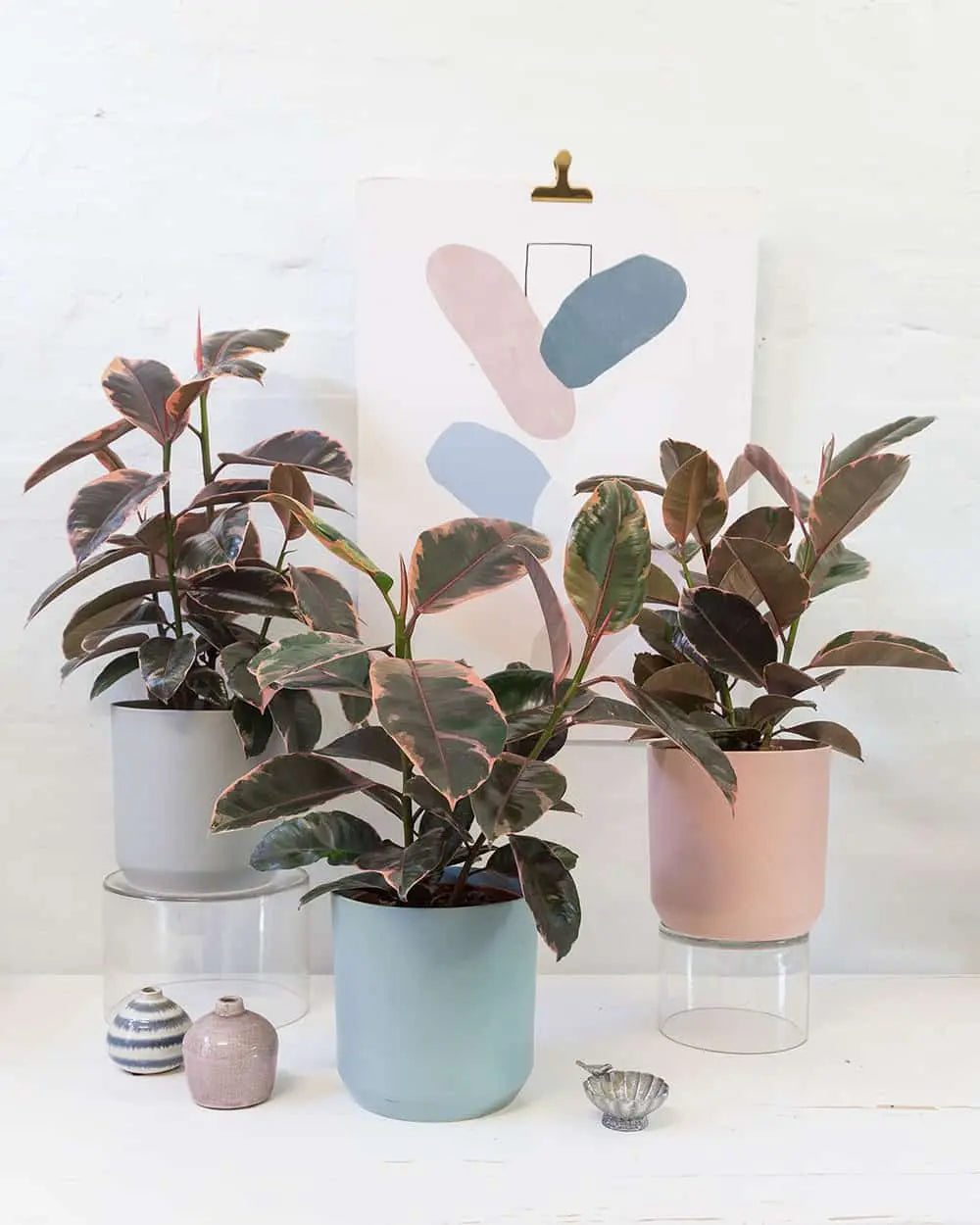
Peace Lily (Spathiphyllum)
Why not give peace a chance? Cultivate peace and beauty in your home with the hardy Peace Lily. This plant is incredibly easy to care for, making it the perfect indoor plant for anyone who believes they have a black thumb.
The Peace Lily has lush emerald green foliage all year round, and during flowering season gives you pretty white flowers.
Keep your Peace Lily out of direct sunlight and don't overwater it. Let the soil mostly dry out between waterings. If you've been using air conditioning or heating, you may need to mist your plant to create a more humid environment.
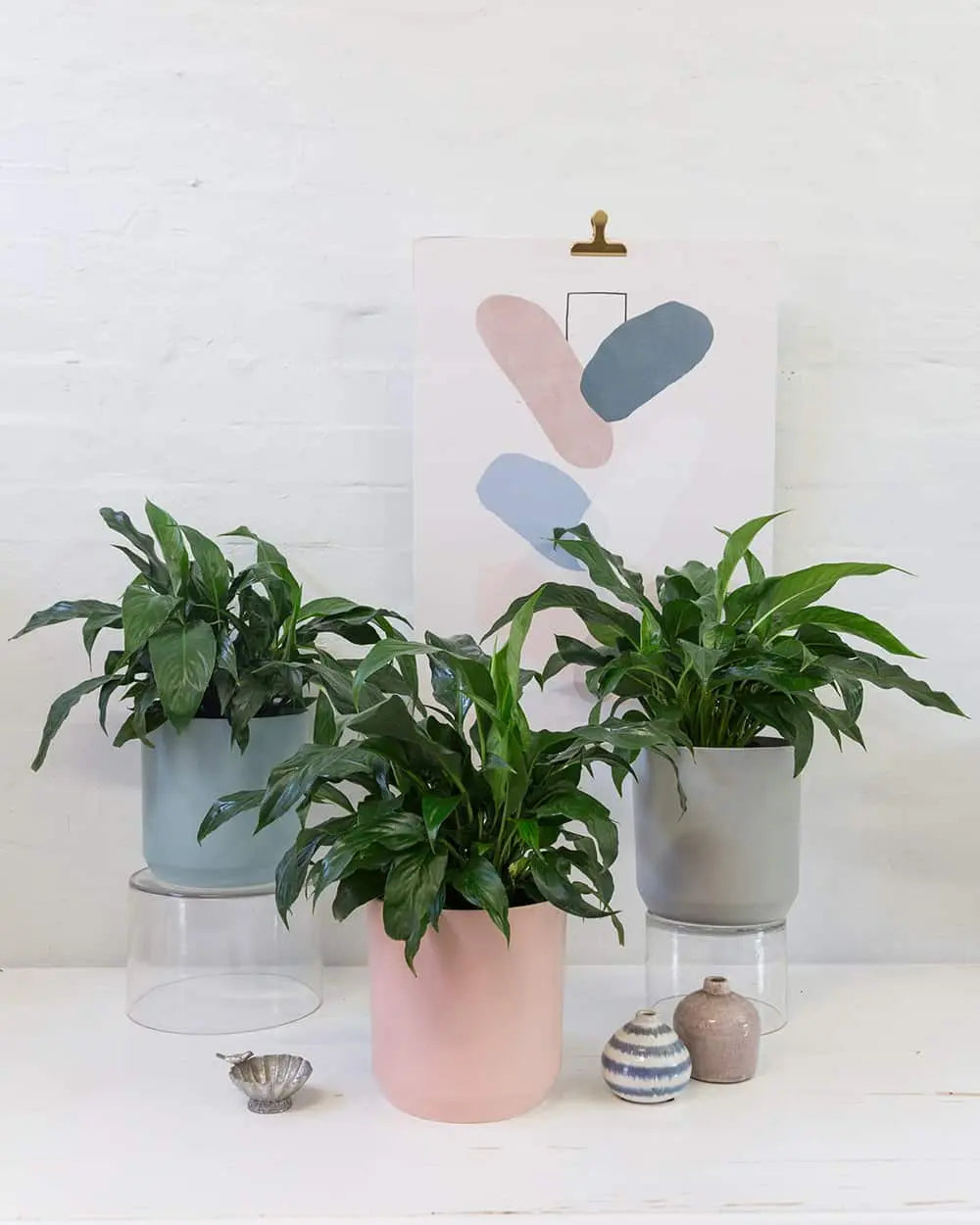
Arrowhead (Syngonium)
We love this striking plant because of its wonderful versatility. The Arrowhead, with its distinctive arrow-shaped leaves that change shape as they mature, is actually a vine. Let it grow for long, trailing tendrils or keep it pruned for a more bushy, compact appearance.
Syngonium can thrive in low to medium light, or bright light, but keep out of direct sunlight.
Keep the soil lightly moist during spring and summer, and allow it to dry out a little more during autumn and winter. Arrowhead prefers high humidity, so it's a good idea to place the pot on a bed of wet pebbles and mist frequently.
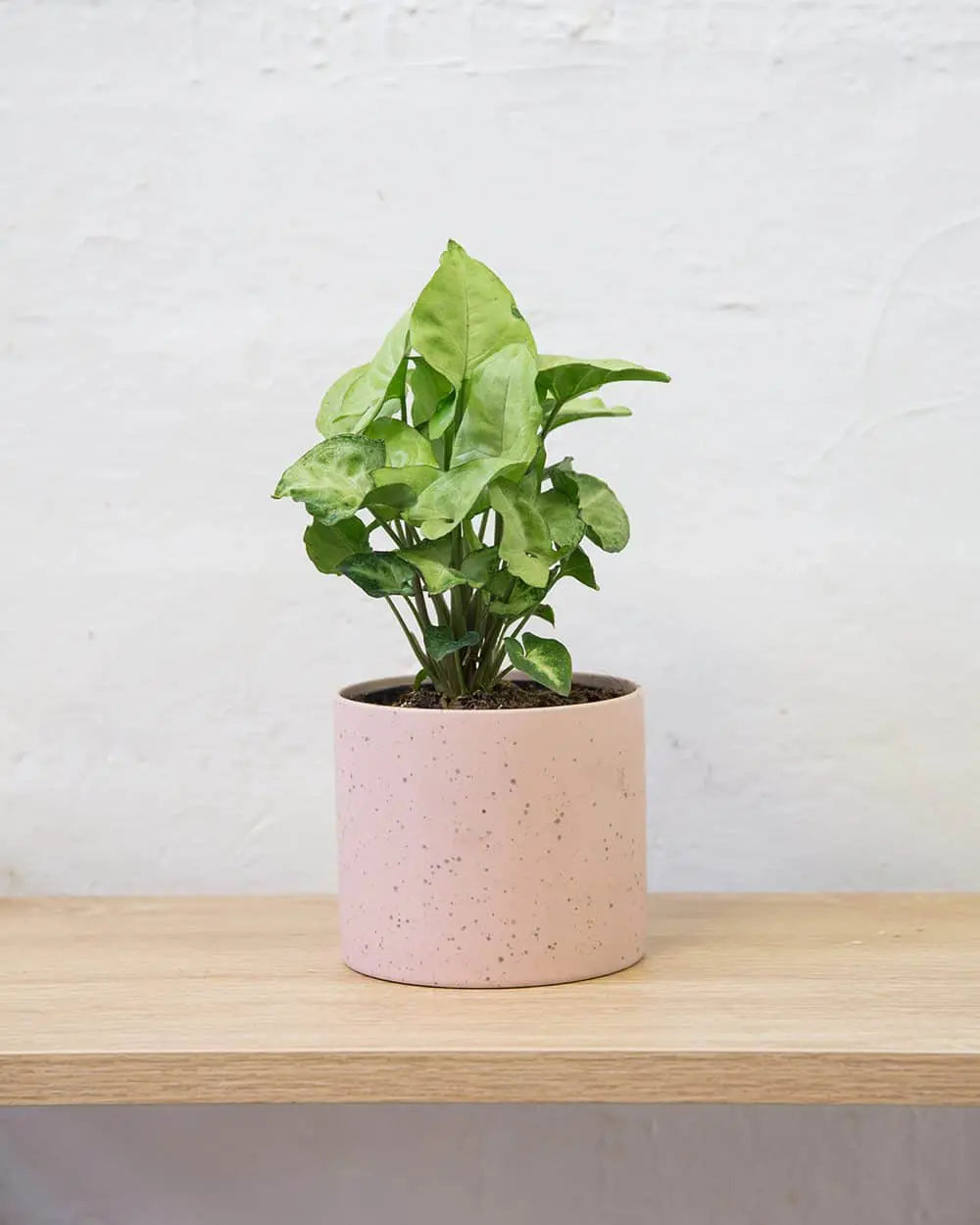
Peperomia Piccolo Banda (Peperomia albovittata)
Perfect for brightening up your desk, bookshelves or bedside table is this little stunner. With its bold striped leaves and vibrant red stems, the Peperomia Piccolo Banda has plenty of personality.
Categorised as a 'radiator plant', Piccolo Banda adapts well to low light levels, and is even happy under fluorescent lights, making it perfectly suited to the office. Although it is happiest at temperatures of 18 to 24°C, it can also cope with as low as 10°C.
Water this little plant from below, and wait until the soil has almost dried out in between waterings. Piccolo stores water in its leaves, which makes it drought resistant.
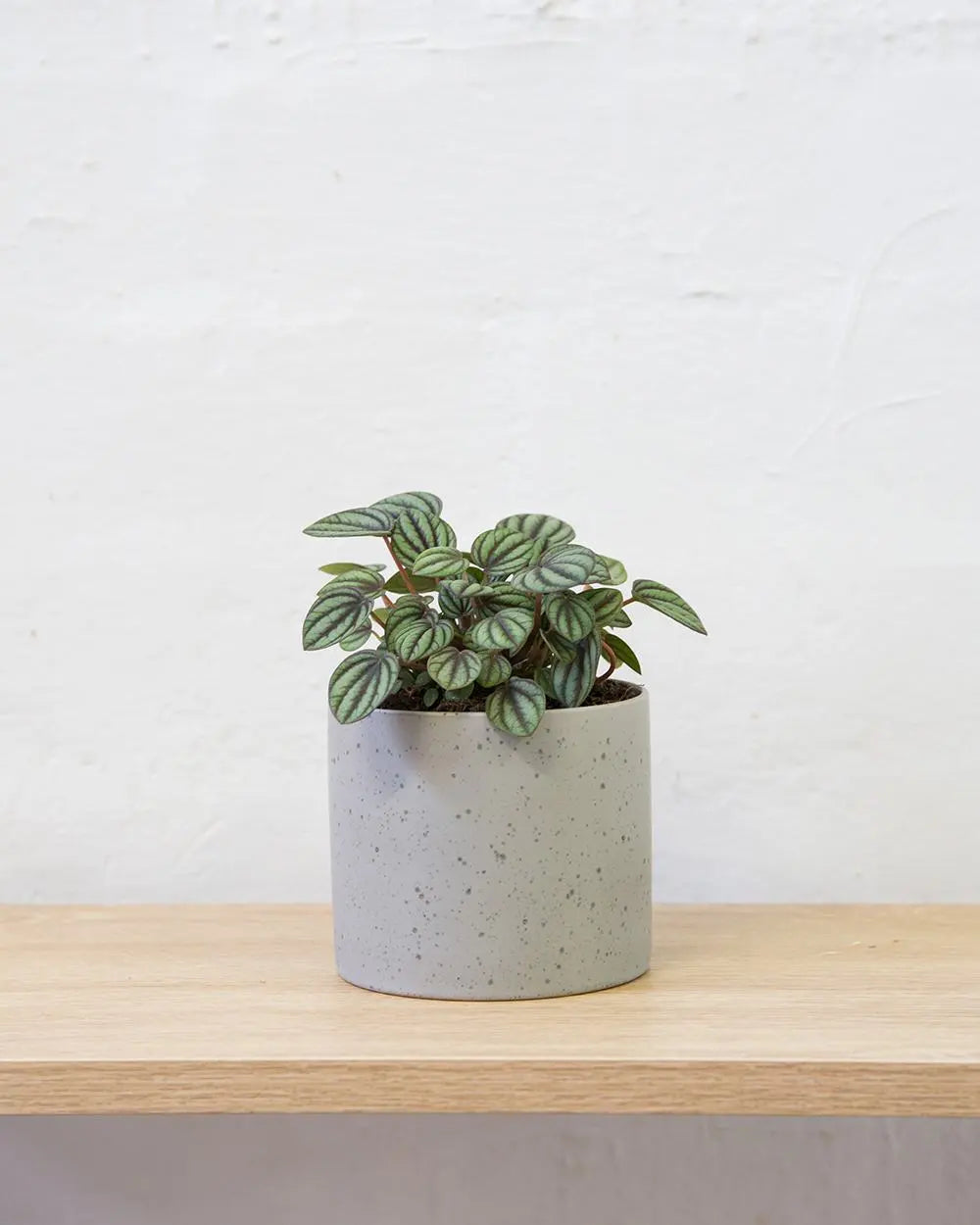
Fiddle leaf fig (Ficus lyrata)
Upright and tall, the Fiddle Leaf Fig is a classy plant, with wide, violin-shaped leaves that fan out gracefully. Native to western Africa, this tree can grow to around 15 metres outside or 3 metres inside.
Just as it will brighten up your home, the Fiddle Leaf Fig requires a bright, sunny room, preferably getting the morning sun, which isn't too harsh.
This plant tolerates dry conditions well, so let the soil dry out between watering to avoid root rot.

Swiss cheese plant (Monstera deliciosa)
If you've got a large, spacious room that's looking a little empty, you need a Swiss Cheese Plant. With its distinctively shaped cut out leaves that have inspired many patterns and prints, this beautiful plant is fairly easy to look after.
The Swiss Cheese plant prefers a warm climate away from direct sunlight. Native to the jungles of southern Mexico and Guatemala, this plant likes a humid environment, so try not to crank the air conditioning or heating.
To avoid root rot, allow the top 4 cm of soil to dry out between waterings. The plant may produce aerial roots - if it does, try to direct them into a container of water.
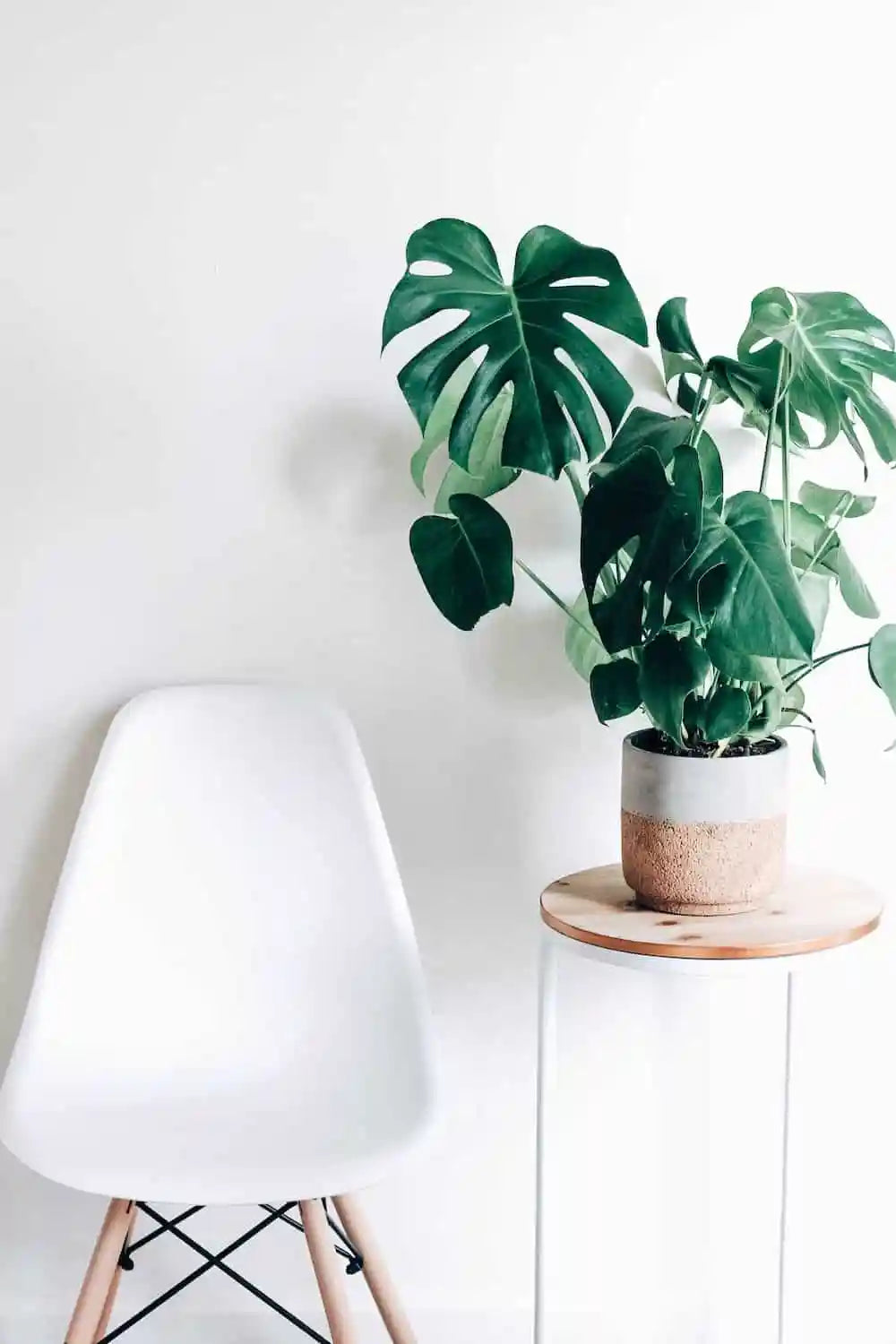
How to take care of indoor plants
All plants have different needs, but there are some common rules you can follow to keep your indoor plants happy.
Don't water too much
Some plants like more water, some like less, but very few want to be sitting in a pool of water, as this can cause their roots to rot. If there's standing water in the saucer at the base of your plant, tip it out. Then wait until the soil has dried out a little before you water again.
Choose a bright spot
Most plants love sunlight, but not direct sunlight, so keep this in mind when finding a place for your plant. Once you've picked a spot, leave the plant there so it can adapt to its environment.
Keep it humid
Apart from cacti, most house plants prefer a humid environment. Try to avoid using air conditioning and heating in the room where your plant lives. To increase the humidity, you can mist the plants regularly or keep a tray of pebbles covered in water in the room. Alternatively, you can buy a humidifier.
Use fertiliser
Along with water, plants also need food. Apply a controlled-release fertiliser every six months and supplement with a water-soluble or liquid fertiliser.
Regularly prune
Every plant is different, so you'll need to do a little research on how best to prune your plants, but it's important that you're regularly removing dead branches and stems to keep your plant healthy and to prevent it outgrowing its pot.
How often to water indoor plants
Want to know when it's time to water your plant? A good rule of thumb (green thumb, of course!) is to test the soil by sticking your finger in up to the knuckle. If the soil feels dry, give your plant some water, but if it still feels moist then leave it a bit longer.
You can also look at your plant for signs of dehydration or over-hydration.
Signs of over-hydration include lack of leaf growth, discolored leaves, leaf loss, and soft, rotten patches.
Signs of dehydration include slower leaf growth, leaf edges that are brown and dried, and lower leaves that become yellow and curled.
How to pot indoor plants
Choosing the right pot and potting mix for your indoor plant is one of the most important things you can do to keep it healthy and happy.
Make sure the pot you choose has plenty of drainage holes and a saucer filled with pebbles underneath. The allows excess water to drain out of the soil and will prevent root rot from occurring.
Ensure the pot is light enough to carry, yet stable enough that it can't be easily knocked over.
When it comes to potting mix, the higher quality the better. Indoor plants rely completely on you for their nutrients, so give them the best!
Do your research on what your plant needs - you can get different types of potting mix to suit different plants and this can make a big difference to how well your indoor plant thrives.
Hopefully, with all this excellent care, your plant will be happy and growing, in which case, you'll need to re-pot it every 2-3 years during spring.
How to keep bugs off indoor plants
Indoor plants are so beautiful that everyone loves them! Unfortunately that includes bugs, and we're willing to bet you don't want to share your new plant with a bunch of annoying insects.
Luckily, by following a few easy steps, you can keep bugs away from your indoor plants.
- Firstly, make sure you use store-bought potting mix, which will generally be sterile, rather than outdoor soil, which can bring larvae in with it.
- Clean your indoor plants regularly with a soft, damp cloth. This removes the buildup of dust, which can attract bugs. Plus, your plant will look nicer!
- If your plant has very small leaves, you can pick it up and submerge it in a sink full of lukewarm, soapy water. Give it a bit of a swish around and then take it out and place it upright to dry.
- Keep an eye on your plant for signs of insect infestation. These include discoloured, speckled, mottled and chewed up leaves. Of course, you may also be able to see the bugs themselves.
If bugs do get to your plant, act fast! Remove them from leaves by either wiping with or submerging in soapy water.
If there are lots of bugs around you might need to get a sticky trap, which can be hung near the infested plant.
Low maintenance / hard to kill indoor plants
If you've read all this and are really keen to get started with a stunning indoor plant of your own, but still lack confidence in the greenness of your thumb, here are our recommendations for the easiest plants to care for:
- Peace Lily - Pretty and peaceful, this little beauty can thrive in low light and low humidity conditions, making it the perfect houseplant.
- Rubber Plant (or any plant from the Ficus family) - These plants don't need to be watered too often, especially in winter, when you'll only need to water them once or twice a month.
- Peperomia - You can keep this gorgeous little plant happy under fluorescent lights - no natural light required! On top of that, it doesn't need to be watered very often and doesn't require high humidity.







